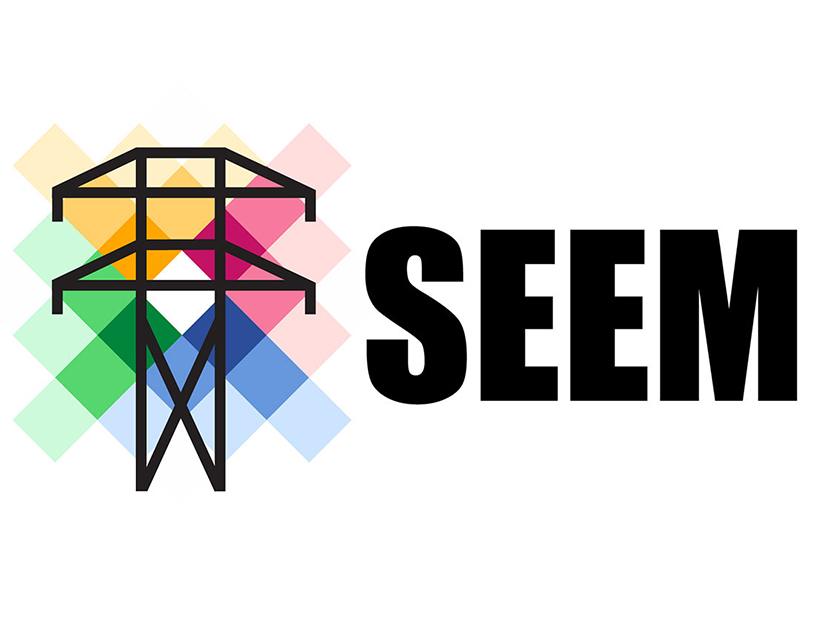Another door has been closed to opponents of the Southeast Energy Exchange Market (SEEM), after FERC on Friday ruled that their request for a rehearing on the market was submitted too late to be heard (ER21-1111, et al.).
The opponents — an ad hoc alliance of environmental and clean energy organizations calling themselves the Public Interest Organizations (PIOs), and a separate group referred to as the Clean Energy Coalition (CEC) — filed their rehearing requests Nov. 12. (See SEEM Opponents File Rehearing Requests.) In its Friday order, FERC declined to engage with these criticisms on the grounds that the opponents should have submitted their requests by Nov. 10.
Both groups also submitted alternative requests in the event FERC denied rehearing. The PIOs asked for their objections to SEEM to be the subject of a “paper hearing with a technical conference before briefing,” while the CEC asked the commission to provide “clarification and confirmation on the role and function of the SEEM proposal and the platform that will enable transactions.”
However, FERC rejected these requests as well. Because the PIOs’ rehearing request was untimely, the commission said the issues raised therein could not be set for a paper hearing. Regarding the CEC’s request, FERC said that “in the absence of an order” relating to SEEM, “there is nothing to be clarified.”
Because the commission was split 2-2, SEEM was automatically approved “by operation of law” Oct. 12. Hence, there was no actual order from the commission. (See SEEM to Move Ahead, Minus FERC Approval.)
According to the Federal Power Act, any parties “aggrieved” by a FERC order may apply for rehearing within 30 days of its issuance. But because FERC did not issue a formal order in the proceeding, the PIOs and CEC recognized Oct. 13 — when FERC announced that the agreement had taken effect — as the date of FERC’s “order.” Under this logic, the deadline for submitting the rehearing request was Nov. 12, making their filings timely.
By contrast, SEEM’s supporters, in a Nov. 30 filing, argued that the “date of issuance” is not when the commission announces a decision, but when it issues an order — or, in this case, fails to do so. (See SEEM Members Seek to Quash Rehearing Requests.) Because Oct. 11 was the deadline for FERC to issue an order, members said that rehearing requests must be filed 30 days after this date, meaning that any requests filed after Nov. 10 were out of time.
FERC did not cite either filing in Friday’s order, but the commission acknowledged that it “has not previously explained … the proper calculation of the deadline for rehearing requests following the failure of the commission to act.” Its subsequent clarification echoes the opinion of SEEM members, with FERC stating that the date of its “order” in this case was Oct. 11 and that the 30-day clock for rehearing requests “starts running on the day after the last day that the commission could have taken action,” meaning the deadline was Nov. 10.
When FERC deadlocked on the original SEEM proposal, Chair Richard Glick and Commissioner Allison Clements — both Democrats — opposed the agreement, while Republican Commissioners James Danly and Mark Christie approved of it. The commission’s filing on Friday did not mention the views of specific commissioners, though it did say that Commissioner Willie Phillips, the newest member who was confirmed by the Senate on Nov. 16, did not participate. (See Senate Confirms FERC Nominee Willie Phillips.)
SEEM Moving Toward 2022 Launch
Because the SEEM agreement took effect in October, FERC has approved revisions to four of the participating utilities’ tariffs implementing the special transmission service used to deliver the market’s energy transactions. (See FERC Accepts Key Tariff Revisions to SEEM.) Members have also submitted further changes to the commission that would implement a series of “transparency enhancements” to the market. The changes were proposed in June in response to FERC’s first deficiency letter, but the commission was not able to mandate their inclusion in the SEEM agreement because it did not issue an order. (See SEEM Members Offer Rule Changes.)
SEEM members also announced on Friday that they had chosen technology solutions company Hartigen to build and deploy the market’s technology platform. The selection of Hartigen follows a request for proposals issued in March. In a press release, members said they plan to have the new market online by the third quarter of 2022.



